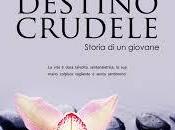Flowers are so universally loved and accepted every where as necessities of a moral life,
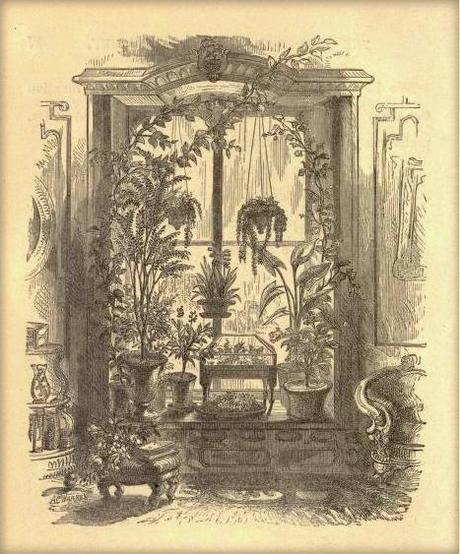
that whatever can be done to render their cultivation easy, and to bring them to perfection in the vicinity of, or within the household, must be regarded as a benefaction.
But in the midst of the smoke and the dust of the city there is but one way to have real verdure, in the freshness of their original strenght and life, and that is, by the culture of it in Wardian cases.
( I fiori sono universalmente amati e visti in ogni dove quale necessità per una vita eticamente intesa tanto che tutto ciò che si può fare per rendere la loro coltivazione facile, e per farli vivere al meglio in prossimità o all'interno del focolare domestico, deve essere considerato alla stregua di un opera buona. Ma in mezzo al fumo e alla polvere della città, non c'è che un modo per avere del verde, nella freschezza della sua forza e della sua vitalità originaria, se non coltivandolo nelle Wardian cases. )
Flowers for the parlor and garden by Edward Sprague Rand Jr., illustrations by John Andrew and A.C. Warren, Cambridge, Mass. Hurd and Houghton ,1876, page 233
Fu nel 1829 che Mr.Ward collocò la pupa di una sfinge ( un lepidottero N.d.A. ) in una muffa, dentro una contenitore cilindrico in vetro, fornita di un coperchio, in modo da ottenere un perfetto esemplare di insetto. Dopo un po' tempo, un piccolo segno o due di vegetazione apparvero sulla superficie della muffa, e con sorpresa, queste si rivelarono essere una felce ed un erba. Il suo interesse fu così solleticato; mise il barattolo in una situazione favorevole, e scoprì che le piante continuarono a crescere e a mantenere un aspetto sano. Interrogandosi sulla questione, le risposte prontamente vennero da sè: l'aria, l'umidità, la luce, e gli altri requisiti delle piante, erano contenuti all'interno della bottiglia. Questa fu la prima Wardian case. 1, page 233
Con il nome di Wardian case s'intendono piccole serre in miniatura che si arricchirono di fregi in legno ed in metallo per assumere fogge sempre più fantasiose ed artificiose con più cresceva la loro popolarità ed il loro divenire indispensabili complementi di arredo per il soggiorno o il giardino d'inverno della dimora di ogni Lady appartenente ad una famiglia mediamente agiata;
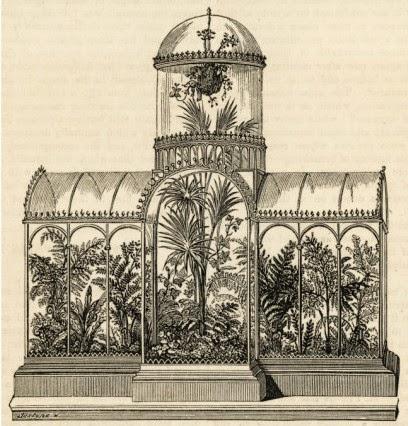
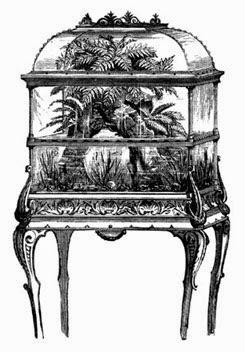
oppure autentici mobili che completavano l'arredo dell'angolo verde in cui venivano collocati.
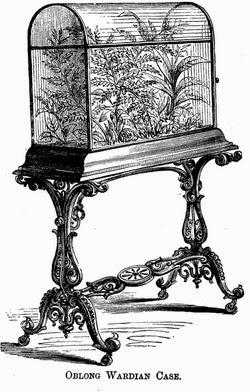
Ma torniamo alla loro storia per meglio comprendere il motivo principale che diede loro successo, poichè se divennero pregevoli complementi d'arredo, esse rappresentarono innanzitutto una delle scoperte botaniche ed economiche più importanti dell'epoca vittoriana.
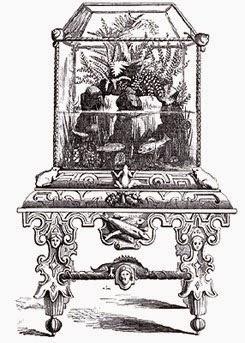
Preso dal fervore per la propria scoperta, Ward inizò una serie di esperimenti costruendo terrari in vetro di dimensioni sempre maggiori giungendo a colmare il suo giardino ed ogni stanza della sua abitazione; i contatti con la famosa Loddiges Nursery che sponsorizzava spedizioni esplorative d'oltremare volte alla scoperta di nuove piante, gli permisero di vagliare ulteriormente la propria creazione: a quel tempo la sopravvivenza di piante a viaggi così lunghi era davvero impensabile e comunque la spedizione di piante sotto vetro non era cosa del tutto nuova, ma nuovo era il concetto dell’ambiente sigillato non contaminato dalle condizioni atmosferiche circostanti.Ward fece quindi costruire da un carpentiere una cassa per le sperimentazioni, il cui telaio doveva essere in legno duro e le connessioni il più rigide e resistenti possibili, al fine di evitare ogni tipo di danno provocato dalla condensa … ecco nata la prima autentica Wardian case.
Nel 1833 spedì in due casse alcune felci originarie dell’Inghilterra in Australia e dopo 6 mesi di navigazione il carico sbarcò nel porto di Sydney con le piante vive ed in perfetta salute: le medesime casse, come su richiesta, vennero ripulite e colmate di specie native australiane che prima di allora non si era mai riusciti a trasportare oltremare; nel febbraio del 1835 il carico salpò e la nave, dopo una serie di tempeste che la colpirono a Capo Horn, giunse a Londra solo dopo 8 mesi di navigazione. Le casse erano sul ponte e mai erano state aperte nonostante le temperature fossero variate da -7 a 49 C° e coperte dalla neve durante buona parte del viaggio.
A Londra Ward attendeva ansioso il rientro della nave con il suo carico; nel suo libro del 1852 si legge: "Non dimenticherò facilmente la gioia di Mr. G. Loddiges, che mi ha accompagnato a bordo, manifestata al vedere l'aspetto sano delle fronde di Gleichenia microphylla [ombrello o felce corallo], una pianta vista per la prima volta in vita in questo paese. "
Dopo il successo riscosso da questo esperimento tutta l’Inghilterra iniziò a usare i terrari,
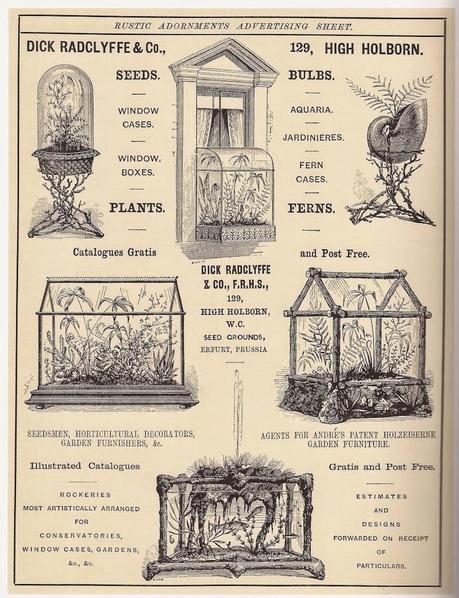
Immagine pubblicitaria di epoca vittoriana
sia per le coltivazioni cittadine che per le spedizioni via mare e Loddiges potè constatare che il tasso di sopravvivenza delle piante era cresciuto dallo 0.1 al 90%.Un'ulteriore curiosità: John Gibson, pupillo di Sir Joseph Paxton - il cui nome è legato alla costruzione del Christal Palace, luogo della Great Exibition di Londra del 1851 - partì per l’India nel 1835 per conto del duca del Devonshire, in un viaggio che lo tenne lontano dall’Inghilterra per oltre 2 anni, e riportò al duca più di 80 specie di orchidee diverse, tra cui quello che venne chiamato Dendrobium devonianum, che fiorì per la prima volta nelle serre di Chatsworth nel 1840.
Fin qui la storia ufficiale che attesta il successo che le Wardian cases ebbero da un punto di vista scientifico, quella del valore che venne loro attribuito da un punto di vista più propriamente estetico ne fu la chiara e palese conseguenza, dato il gusto vittoriano per le piante ornamentali di origine tropicale e l'importanza che aveva l'allestimento dei vani delle abitazioni per la cultura dell'epoca.
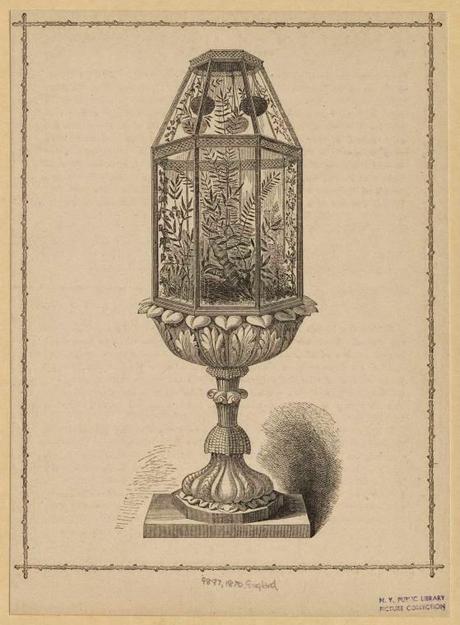
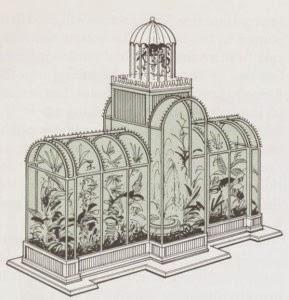
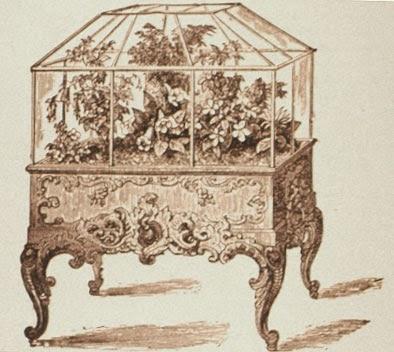
Al di là dei canoni più propriamente estetici, queste piccole serre in miniatura, affinchè potessero e possano tutt'ora funzionare, devono rispondere a determinati requisiti: l'altezza dovrebbe essere uguale alla larghezza; il tetto dovrebbe essere composto da quattro spioventi ed alto la metà di quanto sono i lati, sormontato da un altro piano orizzontale di vetro, montato in modo tale da consentire occasionalmente la ventilazione della Wardian case,
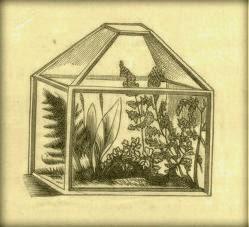
Flowers for the parlor and garden by Edward Sprague Rand Jr., illustrations by John Andrew and A.C. Warren, Cambridge, Mass. Hurd and Houghton ,1876, illustrazione di pag. 235
necessaria soprattutto per piante da fiore e a foglia larga; è fondamentale che esse siano fornite di un doppio fondo, con il primo forato, in modo tale che venga raccolta l'acqua in eccesso che potrebbe danneggiare irrimediabilmente le radici.Il terreno non dovrebbe avere uno spessore superiore a nove pollici ed essere composto, soprattutto per la crescita di felci e lycopodiums, da nove parti di pacciame o terriccio di foglie; una parte di sabbia fresca, una parte di ghiaia piuttosto piccola, delle dimensioni non più grandi di un pisello, ed una parte di stallatico, tritato molto finemente.
Nelle abitazioni vittoriane il vantaggio delle Wardian cases era quello di garantire una maggiore umidità rispetto a quella che generalmente si trovava nei 'parlours' ed un maggiore grado di luminosità, per cui esse consentirono di crescere specie tropicali anche in ambienti secchi e poco luminosi quali erano generalmente i soggiorni ed i saloni che l'uso del tempo voleva arricchiti con pesanti ed importanti tendaggi.
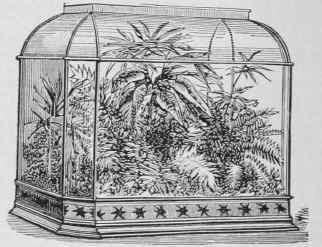
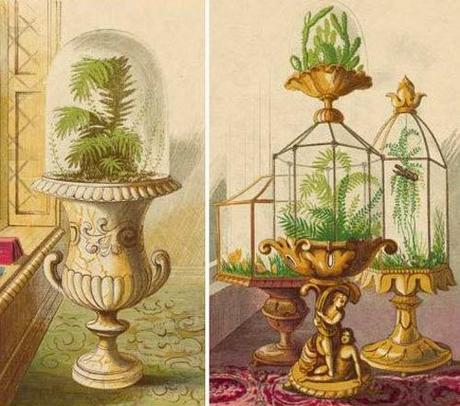

Molto spesso il fascino di un'epoca viene espresso da ciò che ne connotava il gusto e questi oggetti d'arte sono di un prestigio difficilmente eguagliabile, autentici soprammobili, urne rese 'vitali' da ciò che contenevano !
Non sempre mi risulta facile ringraziarvi per le parole con cui esprimete il vostro entusiasmo per ciò che qui leggete e mi manifestate il vostro affetto, ma ammetto che spero, ogni volta, di non deludere, almeno, le vostre aspettative e di meritare, sempre, le vostre attenzioni.
E per concludere eccovi alcune curiosità:
• Nel 1851 alla Great Exibition di Londra Ward mise in mostra una bottiglia contente felci e muschi sigillata da più di 18 anni !
• Grazie alle Wardian cases l’Hevea brasiliensis, l’albero della gomma originario di Pará in Amazzonia, venne spedito con successo a Kew, e da lì verso la Malesia e lo Sri Lanka dove nacque la produzione industriale della gomma coloniale inglese.
• Un tipo di muschio originario dell'Africa venne nominato Wardia in onore del Dr.Ward.
• Robert Fortune si servì delle Wardian cases per trasportare 20,000 piante di tè da Shanghai alla regione dell’Assam in India, dove, ancora oggi, si produce uno dei tè più pregiati al mondo.
• L’orchidomania tardo vittoriana fu resa possible grazie alle Wardian cases poichè molte delle piante che ancor oggi abbiamo nei nostri appartamenti sono state raccolte e condotte in Europa dai loro luoghi d’origine proprio per loro tramite.
Grazie infinite miei cari amici e lettori,
a presto ♥
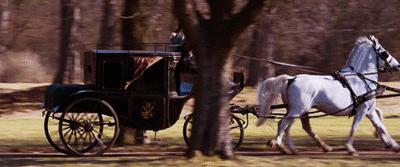

Bibliografia:
Edward Sprague Rand Jr., Flowers for the parlor and garden, illustrations by John Andrew and A.C. Warren, Cambridge, Mass. Hurd and Houghton ,1876, http://www.biodiversitylibrary.org/item/57903#page/1/mode/1up
Citazioni:
1 - Edward Sprague Rand Jr., Flowers for the parlor and garden, illustrations by John Andrew and A.C. Warren, Cambridge, Mass. Hurd and Houghton ,1876, pag. 233

Flowers are so universally loved and accepted every where as necessities of a moral life,
- picture 1
that whatever can be done to render thier cultivation easy, and to bring them to perfection in the vicinity of, or within the household, must be regardeda as a benefaction.
But in the midst of the smoke and the dust of the city there is but one way to have real verdure, in the freshness of their original strenght and life, and that is, by the culture of it in Wardian cases.
Flowers for the parlor and garden by Edward Sprague Rand Jr., illustrations by John Andrew and A.C. Warren, Cambridge, Mass. Hurd and Houghton ,1876, page 233
Son of the Victorian London, student of medicine, but great lover of botany and entomology, Dr. Nathaniel Bagshaw Ward (1791 - 1868) dreamed of covering the walls of his walled garden with ferns and mosses, ... it was really a dream, in that London shrouded by the gray atmosphere of the 'smokey fog', from which the contraction in smog, a dream that he rocked since, as little more than a child, he made a trip with his father to the tropics and was struck by the lush vegetation that characterizing those places every where.
It was in the year 1829 that Mr.Ward placed a chrysalis of a sphynx in some mould, in a glass bottle, covered with a lid, in order to obtain a perfect specimen of the insect. After a time, a speck or two of vegetation appeared on the surface of the mould, and to his surprise turned out to be a fern and a grass. His interest was awakened; he placed the bottle in a favorable situation, and found that the plants continued to grow, and maintain a healthy appearance. On questioning himself about the matter, the answers readily presented themselves, inss-much as air, light moisture, and the other requirements of the plants, were contained within the bottle. This was the first Wardian case. 1
With the name of Wardian cases we mean small Victorian greenhouses that were enriched with stylish ornaments in wood and metal to take them more and more fanciful and contrived with the growing of their popularity and their becoming essential as furnishings for the living room or the winter garden of the residence of every well-to-do Lady belonging to a wealthy family;
- picture 2
they were often placed in the spacious rooms of the bow windows in order to it never was them of defect the light, which, however, never had to be direct because already generously reverberated by the thin glass that composed them, and real artists delighted themselves creating some Wardian cases that combined a terrarium with an aquarium, in which the roots of the plants were touching the water surface
- picture 3
or authentic furniture that complemented the green angle in which they were placed.
- picture 4
But let's come back to their history in order to better understand the main reason that gave them success, for, if they became valuable furnishings, they represented fist of all one of the first and most important economic botanical discoveries of the Victorian era.
- picture 5
Taken by the fervor for his discovery, Ward began a series of experiments building ever larger glass terrariums reaching to fill his garden and every room of his house; the contacts with the famous Loddiges Nursery that sponsored expeditions overseas aimed to discover new plants, allowed him to explore further his own creation: at the time the survival of plants during so long travels was unthinkable, and in any case the shipment of plants under glass was not something entirely new, but the concept that was new was the sealed environment not contaminated by the surrounding atmospheric conditions.
Ward then made buikd by a carpenter a case for the experiments, the chassis of which was to be in hardwood and the connections as much rigid and resistant as possible, in order to avoid any kind of damage caused by condensation ... here was born the first real Wardian case.
In 1833 he sent in two boxes some ferns originating in England to Australia and after 6 months of sailing the cargo landed to Sydney Harbour with the plants alive and in perfect health conditions; the same cases, as on demand, were cleaned and filled with species native of Australia that nobody had never been able to carry overseas before; in February 1835 the cargo set sail, and the ship, after a series of storms that hit it by Cape Horn, arrived in London just after 8 months of sailing.
The boxes were on the bridge and never had been opened despite the temperatures were varied from -7° to 49 ° C and they were covered with snow during most of the trip.
In London, Ward was anxiously waiting for the return of the ship with its cargo; in his book of 1852 we may read: “I shall not readily forget the delight expressed by Mr. G. Loddiges, who accompanied me on board, at the beautiful appearance of the fronds of Gleichenia microphylla [umbrella or coral fern], a plant now for the first time seen alive in this country.”
After the success of this experiment they begun to use Wardian cases all England around,
- picture 6 - Advertising sheet of the Victorian era
for both town crops and for shipments by sea and Loddiges could see that the survival rate of the plants had grown from 0.1 to 90%.
Another curiosity: John Gibson, a pupil of Sir Joseph Paxton, whose name is linked to the construction of the Christal Palace, site of the Great Exhibition in London in 1851, left for India in 1835 on behalf of the Duke of Devonshire, in a trip that kept him out of England for over 2 years, and returned to the Duke with more than 80 different species of orchids, including the one that was called Dendrobium devonianum, which flourished for the first time in the greenhouses at Chatsworth in 1840.
So far the official story that attests the success that Wardian cases had from a scientific point of view, the value that was given to them from the strictly aesthetic ones was the clear and obvious result, given the Victorian taste for the ornamental plants of tropical origin and the importance that the preparation of the rooms, for the culture of the time, had.
- picture 7
- picture 8
- picture 9
Beyond the more properly aesthetic canons, these small greenhouses in miniature, so that they could and can still function, had to meet certain requirements: the height should be equal to the width; the roof should be composed of four sloping sides and the top has to be high half of what are the sides, surmounted by another horizontal plane of glass, mounted in such a way as to allow the occasionally ventilation of the Wardian case,
- picture 10 - Flowers for the parlor and garden by Edward Sprague Rand Jr., illustrations by John Andrew and A.C. Warren, Cambridge, Mass. Hurd and Houghton ,1876, illustration of page 235.
necessary especially for flowering and broadleaf plants; it's essential that they are provided with a double bottom, with the first holed, so that the excess of water,which could irreparably damage the roots, is collected.
The soil should have a thickness not exceeding nine inches and be composed, especially for the growth of ferns and lycopodiums, of nine parts of mulch or leaf mold; one part of fresh sand, one of rather small gravel, and one part of manure, chopped very finely.
Inside the Victorian houses the advantage of Wardian cases was to ensure a higher humidity than that they generally had in their lovely 'parlors' and a greater degree of brightness, that's why they allowed to grow tropical species even in dry environments with little light which generally characterized living rooms and salons that the use of the time wanted enriched with heavy and important curtains.
- picture 11
- picture 12
- picture 13
Very often the charm of one era is expressed by what connoted the taste and these works of art have a prestige difficult to beat, they're authentic ornaments, urns made 'vital' by what they contained!
Not always it's easy to me thanking you for the words with which you express your enthusiasm for what you read here and you show your affection to me, but I admit that I hope every time, not to disappoint, at least, your expectations and to deserve, always, your attentions.
And finally here are some curiosities:
• In 1851 the Great Exhibition of London Ward put on display a bottle containing ferns and mosses sealed there for over 18 years !
• Thanks to the Wardian cases the Hevea brasiliensis, the rubber tree native of Pará in the Amazon was successfully sent to Kew, and from there to Malaysia and Sri Lanka where the industrial production of English colonial rubber was born.
• A type of African moss was named Wardia in honour of Dr.Ward.
• Robert Fortune used Wardian cases to transport 20,000 tea plants from Shanghai to the region of Assam in India, where even today it is produced one of the finest tea in the world.
• The late Victorian 'orchidomania' was made possible thanks to Wardian cases because lots of the plants that we still have in our apartments were collected and taken to Europe from their own places of origin through them.
Thank you my dear friends and readers,
see you soon ♥
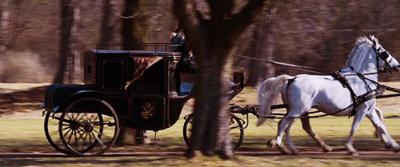

Bibliography:
Edward Sprague Rand Jr., Flowers for the parlor and garden, illustrations by John Andrew and A.C. Warren, Cambridge, Mass. Hurd and Houghton ,1876,http://www.biodiversitylibrary.org/item/57903#page/1/mode/1up
Qotations:
1 - Edward Sprague Rand Jr., Flowers for the parlor and garden, illustrations by John Andrew and A.C. Warren, Cambridge, Mass. Hurd and Houghton ,1876, pag. 233

